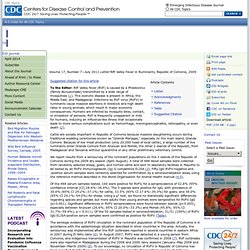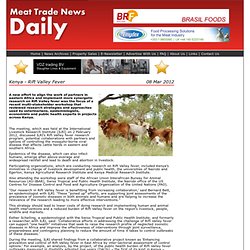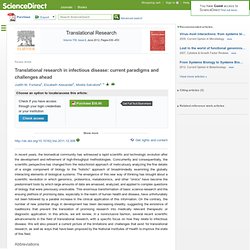

PREVENTION AND CONTROL OF RIFT VALLEY FEVER. Early detection of RVF is a prerequisite to effective control of the disease.

Sentinel herd monitoring has been used in different parts of Africa to monitor viral circulation in susceptible populations. It can be enhanced by the additional monitoring of climatic parameters (see: Towards early warning for RVF prevention: satellite imagery, p. 35). Sentinel herd monitoring Activities should be directed towards active disease surveillance in order to build up baseline information on inter-epidemic virus transmission patterns, areas at risk and early warning of any increased virus activity or buildup in vector mosquito populations.
This surveillance should be carried out by regular field visits and contact with livestock farmers and communities and should include periodic purposefully designed and geographically representative serological surveys and participatory epidemiological techniques. Sentinel herds are an important means of obtaining baseline epidemiological information on RVF. Définitions et méthodes - Espérance de vie en bonne santé / AVBS. Rift Valley fever virus epidemic in Kenya,... [Am J Trop Med Hyg. 2010. Rift Valley Fever in Ruminants, Republic of Comoros, 2009 - Vol. 17 No. 7 - July 2011. Skip directly to local search Skip directly to A to Z list Skip directly to navigation Skip directly to site content Skip directly to page options CDC Home CDC 24/7: Saving Lives.

Protecting People.™ <div class="noscript"> Note: Javascript is disabled or is not supported by your browser. Emerging Infectious Disease ISSN: 1080-6059 Volume 17, Number 7—July 2011 Letter Rift Valley Fever in Ruminants, Republic of Comoros, 2009 Article Contents Suggested citation for this article To the Editor: Rift Valley fever (RVF) is caused by a Phlebovirus (family Bunyaviridae) transmitted by a wide range of mosquitoes (1). Cattle are socially important in Republic of Comoros because massive slaughtering occurs during traditional wedding ceremonies known as “Grands Mariages,” especially on the main island, Grande Comore.
We report results from a serosurvey of the ruminant populations on the 3 islands of the Republic of Comoros during the 2009 dry season (April–August). Matthieu Roger Acknowledgments. Kenya - Rift Valley Fever. A new effort to align the work of partners in eastern Africa and implement more synergetic research on Rift Valley fever was the focus of a recent multi-stakeholder workshop that reviewed research strategies and approaches used by veterinarians, epidemiologists, economists and public health experts in projects across Kenya.

The meeting, which was held at the International Livestock Research Institute (ILRI) on 2 February 2012, discussed ILRI’s Rift Valley fever research program, potential collaborations with partners and options of controlling the mosquito-borne viral disease that affects cattle herds in eastern and southern Africa. Epidemics of the disease, which can also infect humans, emerge after above-average and widespread rainfall and lead to death and abortion in livestock. "Our research in Rift Valley fever is benefitting from increasing collaboration,’ said Bernard Bett, an epidemiologist with ILRI. In 2008, ILRI estimated the disease cost the Kenyan economy USD30 million. Mr. Lee CatTrack.
Mayotte. Formation. Translational research in infectious disease: current paradigms and challenges ahead 10.1016/j.trsl.2011.12.009 : Translational Research. In recent years, the biomedical community has witnessed a rapid scientific and technologic evolution after the development and refinement of high-throughput methodologies.

Concurrently and consequentially, the scientific perspective has changed from the reductionist approach of meticulously analyzing the fine details of a single component of biology to the “holistic” approach of broadmindedly examining the globally interacting elements of biological systems. The emergence of this new way of thinking has brought about a scientific revolution in which genomics, proteomics, metabolomics, and other “omics” have become the predominant tools by which large amounts of data are amassed, analyzed, and applied to complex questions of biology that were previously unsolvable. 2-DE, 2-dimensional electrophoresis; 2-D DIGE, 2-dimensional differential in-gel electrophoresis; CF, cystic fibrosis; CTSA, Clinical and Translational Science Awards program; EBV, Epstein-Barr virus; FDA, U.S.
Run-Emerge. Biblio. de RVF (Zinga) (suite 1) CRORA : BASE DE DONNEES SUR LES VIRUS AFRICAINS.
Animal & SHS. Changement globaux santé animale. FVR. Modélisation math-épidémio diffusion. One health. Gestion santé animale. SIG.